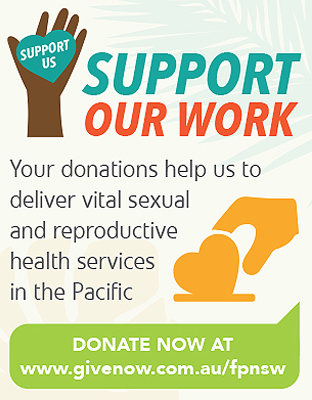Ovarian cysts: distinguishing the physiological from the concerning
Reference
Comninos, NB., Zawada, SF., Ramsay, P., Bateson, DJ., Black, K., 2020, Ovarian cysts: distinguishing the physiological from the concerning, Medicine Today, 21(6) 64-88Cervical screening in Solomon Islands: challenges and opportunities for a national screening programme
Reference
Botfield, JR., McGowan, C., Gagahe, V., Tashkeel, F., Stuart, A., 2021, Cervical screening in Solomon Islands: challenges and opportunities for a national screening programme, Development in Practice, available online 13Increasing the accessibility of long-acting reversible contraceptives through nurse-led insertions: A cost-benefit analysis
Reference
Botfield, J. R., Lacey, S., Fleming, K., McGeechan, K., & Bateson, D., 2020, Increasing the accessibility of long-acting reversible contraceptives through nurse-led insertions: A cost-benefit analysis, Collegian, 27(1) 109-114Working towards gender equality in rural Timor-Leste and Papua New Guinea: Community health survey findings
Reference
Smith, H., Botfield, J. R., Soares, M., Hagoma, R., Cheng, Y., & McGeechan, K., 2019, Working towards gender equality in rural Timor-Leste and Papua New Guinea: Community health survey findings, Pacific Journal of Reproductive Health, 1(9) 506-512Maximising Natural Fertility
Today people often leave plans for pregnancy until later in their adult lives. This is different to previous generations. Women are naturally more fertile in their 20s than their 30s but women are more often having children when they are aged 30-34 years old. Media reports of female celebritieswho get pregnant in their 40s or later can lead people to think that getting pregnant later in life is easy. In real life it can be difficult.
Infertility
Fertility is your natural ability to have a child. Infertility is when a couple has had regular unprotected intercourse for a year but have not become pregnant. For a woman to become pregnant, a man's sperm needs to meet with a woman's egg. The fertilised egg then implants in the lining of the woman's uterus and starts to grow into a baby.
After Having A Baby
Your body goes through lots of changes in the weeks after giving birth. You may have heard the terms postpartum and postnatal used to describe the time after birth. Postpartum is the time right after you give birth. Postnatal describes the 6 weeks after you give birth. During this time your body is returning to how it was before pregnancy - it usually takes much longer than 6 weeks to feel back to normal. You should have a postnatal check-up when your baby is about 6 weeks old. You can have your check up at your GP or at a Family Planning NSW clinic. This visit is a good time to talk about contraception, sleep patterns, breastfeeding and any stresses you are experiencing with the adjustment to caring for a baby. Information on common issues during this time is provided below.
Law On Abortion In NSW
The law in NSW
- In Australia, abortion is legal in all states and territories under certain circumstances and when it is done by a registered doctor.
- Each state and territory has different laws.
- In NSW abortion was removed from the Crimes Act of 1900 in October 2019 with the passage of the Abortion Law Reform Act 2019 In NSW
Unplanned Pregnancy: Abortion
This fact sheet is for women who are experiencing an unplanned pregnancy and want information about abortion. Abortion is when a pregnancy is terminated (ended).
Breast Awareness
It is important to know how your breasts usually look and feel so that, if there are any changes, you can seek help as soon as possible. Most breast changes are due to benign (non-cancerous) conditions. If you notice any changes to your breasts, see your doctor so you can rule out breast cancer. Breast cancer is the most commonly diagnosed cancer in women in Australia. One in eight Australian women will be diagnosed with breast cancer by the time they turn 85 years.


